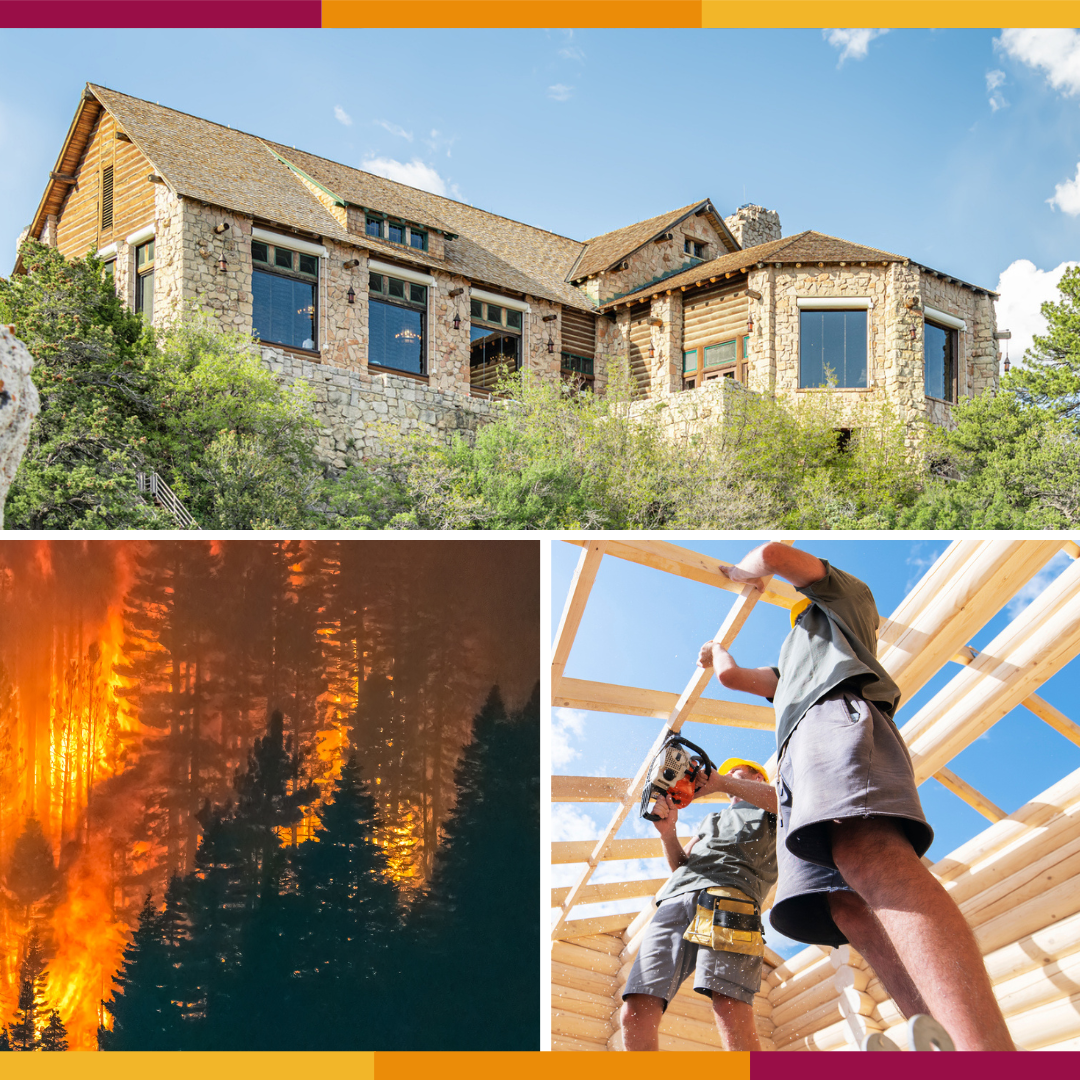
Lisa A. Gardner, Ph.D., CPCU, AIC, AIDA, API,
is the Associate Director, Content and Research, at the Risk & Insurance Education Alliance.
On July 13, 2025, the Dragon Bravo wildfire decimated the Grand Canyon Lodge. Built inside Grand Canyon National Park’s North Rim, the lodge welcomed guests for nearly a century. Constructed of native timber and Kaibab limestone, the distinctive lodge was listed on the National Register of Historic Places decades ago.
Nearby historic cabins, National Park Service administrative buildings, visitor services buildings, and a wastewater treatment plant were also among the structures damaged or destroyed. (Vandell, 2025) In total, the wildfire decimated approximately 70 structures. (ibid) Fortunately, no one was injured or killed by the fire. (ibid)
The National Park Service (NPS) subsequently closed the North Rim, along with five hiking trails, for the rest of 2025. The Park remains accessible through the South Rim, the entrance preferred by most park visitors. (Covarrubius, 2025)
Park officials have not yet commented on whether the lodge and surrounding buildings on the North Rim will be rebuilt. Given looming NPS budget cuts, the rebuild may happen more slowly than some would like.
Rebuilding a beloved NPS building, and one that is a National Historic Landmark, is no small undertaking. While the NPS provides design and build guidelines, it does not create architectural plans or construct buildings. Instead, the NPS contracts with architects to design specific structures and contractors to make them. The contractors, in turn, may hire subcontractors to complete specific tasks such as installing HVAC systems or pouring concrete.
The NPS self-insures property losses, including wildfire damage to the lodge and other NPS-owned buildings. However, this coverage does not extend to building contractors or subcontractors who may experience a loss to materials, supplies, scaffolding, movable equipment, or the covered structure. These exposures, among others, may be covered by builder’s risk insurance. Common perils insured under builder’s risk include breakage, collapse, explosion, fire, hail, lightning, theft, vandalism, wind, or acts of God (e.g., hurricanes).
Because builder’s risk covers property transported over land, it falls into the broad classification of coverages known as inland marine insurance. Bailee insurance and installation floaters are two of several other types of inland marine coverages.
Refresh Your Knowledge About Inland Marine Insurance!
The Alliance’s self-paced Commercial Inland Marine Concepts and Coverages helps you understand the benefits of Bailee coverage, what Builder’s Risk insurance covers, and when an Installation Floater is necessary.
This seven-hour advanced course satisfies continuing education requirements in several states.
For more information, see:
References
Covarrubius, J. R. (2025, July 14). The Grand Canyon Lodge burned in a wildfire. What to know about its history. Retrieved from azcentral.com (Arizona Republic)
The California Department of Forestry and Wildfire Protection. (2025, July 15). 2025 Incident Archive. Retrieved from The California Department of Forestry and Wildfire Protection
Vandell, P. a. (2025, July 14). A wildfire has devastated the Grand Canyon’s North Rim. What to know. Retrieved from azcentral.com (Arizona Republic)














